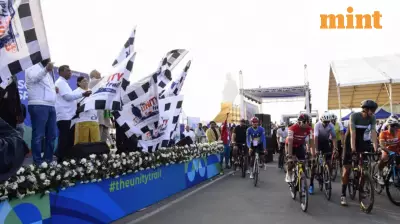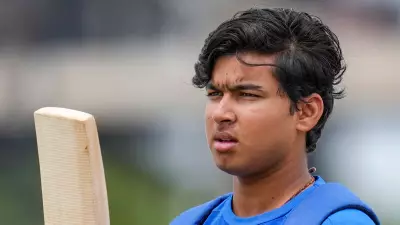
Lakshya Sen Enters Peak Years With Physical Challenges
Indian badminton star Lakshya Sen has now entered the crucial 25+ age bracket, which historically represents the peak performance years for Indian men's singles shuttlers. This period between 25-28 years saw legendary players like Kidambi Srikanth, Pullela Gopichand, and Prakash Padukone achieving their career highlights. However, Sen's journey through these prime years comes with unique physical challenges that require careful management of both expectations and playing style.
The Paris Disappointment and LA 2028 Dreams
While only an Olympic medal at Los Angeles 2028 can truly heal the heartbreak from his Paris 2024 performance, the next two seasons will prove decisive in determining Sen's ultimate place in Indian badminton history. The elusive targets of Asian Games gold, All England championship, and a second World Championship medal remain key objectives for Indian men's singles badminton in 2026.
The 2025 season has seen Sen's fortunes decline unexpectedly. Instead of the anticipated aggressive charge toward titles following the Paris disappointment, he finds himself still seeking his first title of 2025 at the Australia tournament. Those closest to him understand the immense difficulty of this regrouping phase and starting completely anew.
The Duality of Sen's Game: Brilliance and Inconsistency
Despite current challenges, Sen continues to command respect from top coaches and peers worldwide. He's recognized as a dangerous floater with the strategic intelligence to outthink any opponent when his fitness cooperates. This creates the central conflict between public expectations and physical reality.
Sen's best performances, like his recent showing in Sydney, demonstrate such exceptional quality that his occasional first-round exits and narrow defeats become difficult to comprehend. This pattern of dramatic highs and lows is something Indian badminton fans may need to accept as part of his career trajectory.
The consistency displayed by players like Chou Tien Chen or Anders Antonsen, the big-match temperament of Kunlavut Vitidsarn, the smooth dominance of Viktor Axelsen and Shi Yuqi, or the explosive power of Li Shifeng, Lee Zii Jia, and Loh Kean Yew represent playing styles fundamentally different from Sen's approach.
The Physical Toll of Sen's Playing Style
Every victory and successful tournament week requires extraordinary effort from Sen. His periods of success are often followed by months spent addressing physical niggles, managing flare-ups, and strengthening his vulnerable back and unpredictable ankle.
Sen's aggressive playing style places exceptional strain on his spine. Even with optimal training and advanced recovery methods, there exists a natural threshold to his top-level performance given badminton's demanding back-to-back tournament schedule.
What might appear as disinterested performances or inexplicable losses to lower-ranked opponents often represent Sen carefully balancing mandatory tournament participation with managing his problematic back. This requires a specific 'long stop – short start' rhythm to maintain physical integrity.
His recent 21-16, 21-7 loss at the French Open to a Vietnamese-Irish opponent, coming just one week after defeating Irish player Nhat Nguyen in Denmark, illustrates this unpredictable pattern that India must learn to expect.
The Biomechanical Reality Behind the Spectacle
Sen's spectacular defensive game, while dazzling in its speed and intelligence, extracts a heavy physical price. The back torque generated during his characteristic dives and lunges often leads to painful recovery sessions involving ice baths.
Blessed with exceptional reflexes, Sen has mastered dramatic court movements that resemble gymnastics – diving in multiple directions and rapidly returning to ready position. While these acrobatics demonstrate incredible athleticism, this retrieving style punishes his body daily.
Sen must strategically select when to deploy maximum effort and carefully manage match-ups by rationing energy to ensure he isn't exhausted before reaching finals. Unlike other players who can consistently perform deep into tournaments, Sen must perfect the art of peaking precisely when it matters most.
Biomechanically, Sen and his coaching team continuously work to optimize shot selection and develop efficient rally-ending strategies. The constant concern remains that he might overtrain to compensate for the natural power-hitting ability that comes less easily to him than to some competitors.
Experts agree that Sen faces one of the most complex balancing acts between gym work and court training due to his back condition. His first-set performances could benefit from mental strengthening and tactical precision, as those characteristic fightbacks and deciding games, while entertaining for spectators, take a brutal toll on his body.
When committed to a match, Lakshya Sen gives absolutely everything. However, he cannot sustain weeks filled with three-set battles without the accumulated exhaustion affecting his final performances.
Long-Term Health Considerations
Spine health remains critically important beyond competitive badminton years, making cautious management essential for Sen's long-term wellbeing. The Indian badminton community must trust Sen's judgment about when to push aggressively and when to regroup quietly, even if temporary losses appear concerning.
The season-ending World Tour Finals reward consistency – a quality that has eluded India's top men's singles player so far. While this represents challenging news, there's positive aspect: Sen has apparently made peace with this reality and understands the careful management required for sustained career longevity.





